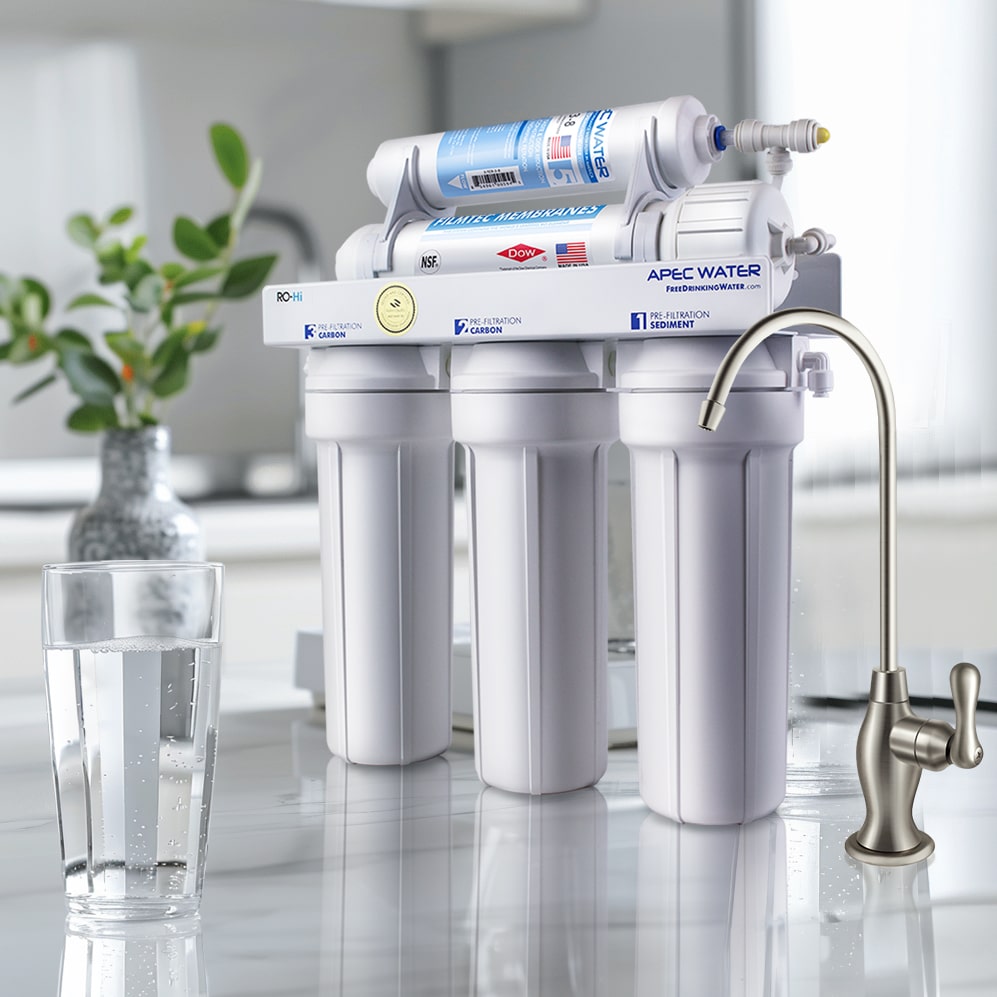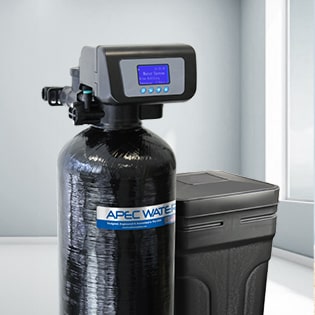Pick up a glass of water and hold it to the light. Can you see any finely divided, insoluble particles suspended in the water? Or does the water seem hazy? If so, the water is turbid.
Turbidity. Turbidity and suspended matter are not synonymous terms, although most of us use the terms more or less interchangeably. Correctly speaking, the suspended matter is that material that can be removed from water through filtration or the coagulation filtration process. Turbidity, on the other hand, is a measure of the amount of light scattered and absorbed by water because of the suspended matter in the water.
There is also some danger of confusion regarding turbidity and color. Turbidity is the lack of clarity or brilliance in water. Water may have a great deal of color -- it may even be dark brown -- and still, be clear and without suspended matter.
 |
 |
| Turbidity - Low | Turbidity - High |
When water has a large amount of such suspended particles, we lose our zest for it. While high-turbidity water may be safe to drink, it seems offensive to us. The EPA Interim Primary Drinking Water Regulations recommend that the turbidity of potable water be less than 1 unit and less than 5 units under special conditions. The suspended particles clouding the water may be due to such inorganic substances as clay, rock flour, salt, calcium carbonate, silica, iron, manganese, sulfur, or industrial wastes. Again, the clouding may be caused by organic substances such as various microorganisms, finely divided vegetable or animal matter, grease, fat, oil, and others.
While turbidity may be due to a single foreign substance in water, chances are it is probably due to a mixture of several or many substances. These particles may range in size from fine colloidal materials to coarse grains of sand that remain in suspension only as long as the water is agitated. Those particles which quickly sink to the bottom are usually called sediment. There are, however, no hard and fast rules for classifying such impurities. Water from a swiftly flowing river or stream can contain a considerable amount of sediment. In contrast, water taken from a lake or pond is usually much clearer because a quiet, non-flowing condition of water settles the sediments down. Thus, all but very fine particles sink to the bottom. The least apt to contain sediment are wells and springs. Sediment is generally strained from these waters as they percolate through sand, gravel, and rock formations.
Turbidity varies tremendously even within these various groupings. Some rivers and streams have water that appears crystal clear with just trace amounts of turbidity in them, especially at points near their sources. These same moving waters may contain upwards of 30,000 ppm of turbidity at other points in their course to the oceans. In fact, turbidity in amounts well over 60,000 ppm have been registered.
Again, there are significant fluctuations in the amount of turbidity in a river at different times in a year. Samples taken at various times from the same site show the Allegheny River carried from a high of 65 ppm of turbid material to a low of 2 ppm. The average ran around 21 ppm. The Flint River at Albany, Georgia ranged from a high of 560 ppm to a low of 12 ppm. An even more striking example of these seasonal variations in turbidity is provided by the Arkansas River. At Arkansas City, Kansas the high was 27,500 ppm, the low 14 ppm and the average 2,300 ppm.
Heavy rainfalls, strong winds, and convection currents can greatly increase the turbid state of both lakes and rivers. Warm weather and increases in the temperature can also add to the problem. For warmer weather, microorganisms and aquatic plants renew their activity in the water. As they grow and later decay, these plant and animal forms substantially add to the turbid state of water. Also, they frequently cause an increase in odor and color problems.



